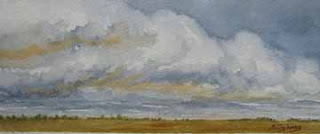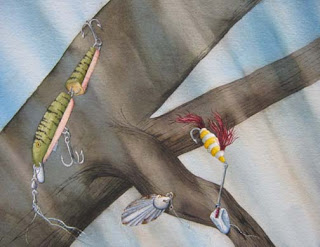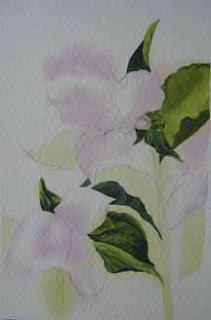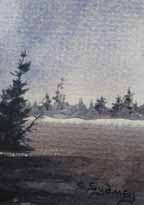 In the Kawarthas there is a wealth of lakes, rivers and wetlands.
In the Kawarthas there is a wealth of lakes, rivers and wetlands.The most common rock in the area is granite in both the pink and grey colours.
In many places along the lakes and rivers there are strikingly beautiful and massive outcroppings of pink granite. Burleigh Falls is one area well known for its rushing water set against the pink stone.
Calm Afternoon
If you would like more information about OSWOA please go to my post on 12 March 2010.
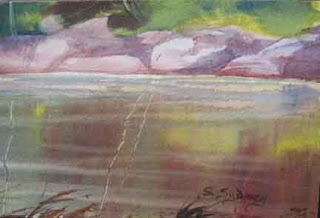
Pink Rocks
The OSWOA shown here are both original watercolour paintings using Artist quality Winsor & Newton paint on 140lb. Arches 100% rag, acid free watercolour paper. They are priced at $40.00 each and sold unframed.




